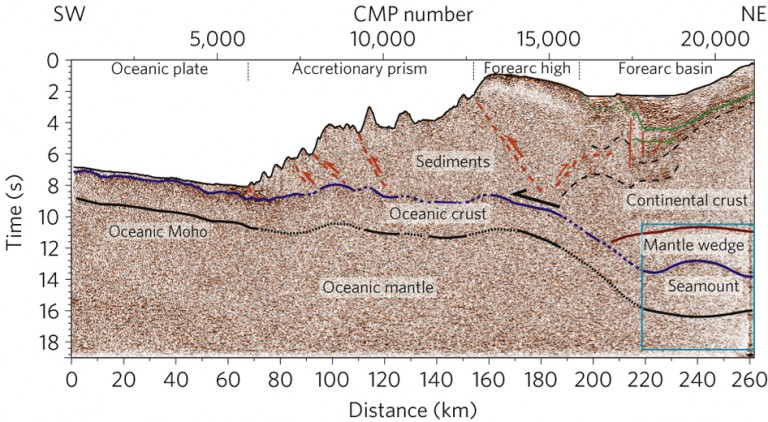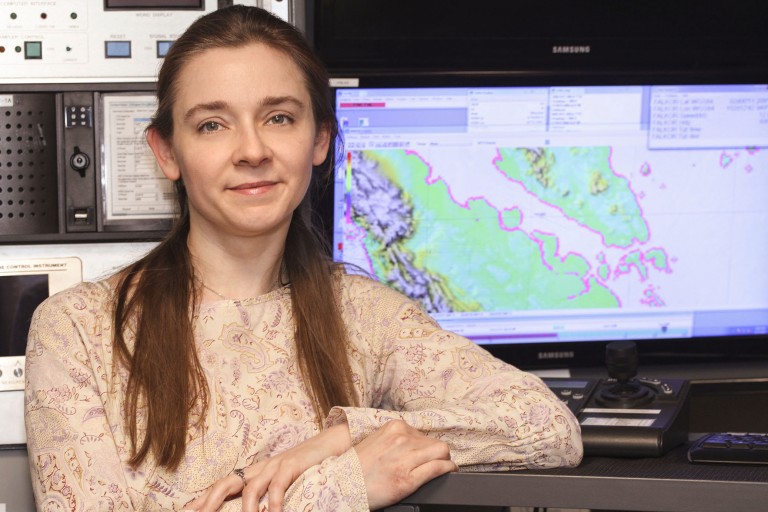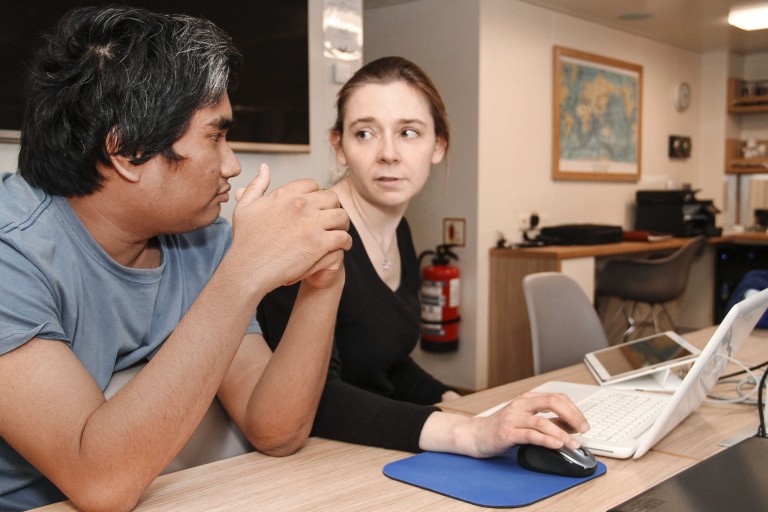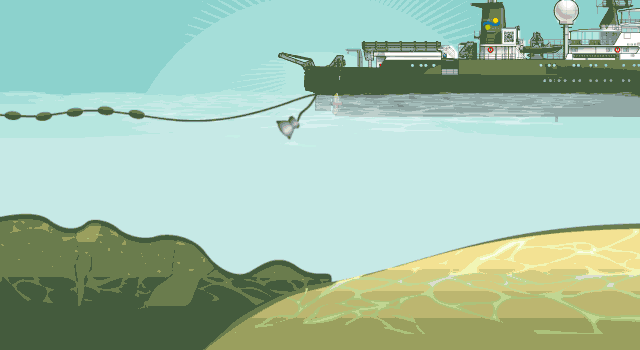
If you read our post yesterday about bathymetry you know that R/V Falkor’smultibeam echosounder system will allow the MEGATERA expedition to acquire high-resolution 3D images of the ocean’s floor relief. But no matter how great the level of detail on the bathymetric data is, it can never show what is below the sea’s bottom, where many clues await. That is why scientists will combine the bathymetric data with seismic reflection profiling.
It is an imposing name, but the principle behind it is as creative as it is simple. Scientists will use a seismic source to create an air bubble that will compress and expand, thus propagating a pressure wave that will travel to the sea bottom and bounce back once as it hits the boundaries between the floor’s layers. When the sound waves reach the surface, an array of hydrophones (called a streamer) will pick up the signal.
The science team will create new impulses in timed intervals, while R/V Falkor moves forward. By combining all of the signals perceived during a given travel distance, the scientists will be able to recreate a 2D image of the subfloor geology.
There has to be a compromise

Dr. Hélène Carton, an onboard geophysicist who specialized in marine seismic imaging, points out that not all seismic reflection data is created equal. Scientists need to choose between depth or resolution when designing a seismic reflection experiment. The higher frequencies of operation provide the highest resolution, however, this limits the amount of penetration below the sea floor. The lower frequencies yield more penetration, but less resolution.
The MEGATERA expedition has favored resolution over depth and there is a very good reason for it. Deeper surveys of the area have already been conducted here, so changing the frequency will give the team an opportunity to compare past results with what they find this time.
Beware of the ghosts

During this expedition, Dr. Carton will work on processing and interpreting seismic reflection data using techniques that compensate for unwelcome information such as ghosts, feathering, and weather noise.
Ghosts
Ghosts represent added information from the reflection of sound waves on the sea surface, close to the hydrophones. Dr. Carton will make sure that the data provided by the hydrophones is used to paint the silhouette of the sub surface geology, focusing solely to the sound wave coming back from the depths, and not to any other sound-generating elements.
Feathering
Water is not a solid medium, so of course both the streamer and the vessel will be constantly moving sideways. There is no way to write a straight line. The science team will be monitoring the source point location and hydrophones carefully to compensate for deviation in the data. The sophisticated positioning system associated with the seismic equipment aboard R/V Falkor will allow the team to do just that.
Weather
Last, the scientist onboard need to be aware of weather-related noise. Monitoring these potential sources of unwanted data will help to keep data clean and provide important information to the science team. After all these elements are detected and filtered, then the “painting” can start.
As R/V Falkor continues sailing to the first survey location, excitement increases around the team. Dr. Carton confesses that she is extremely eager, and is channeling her energy into the daily trainings that she conducts, making sure everything and everyone is prepared for the intriguing days to come.


